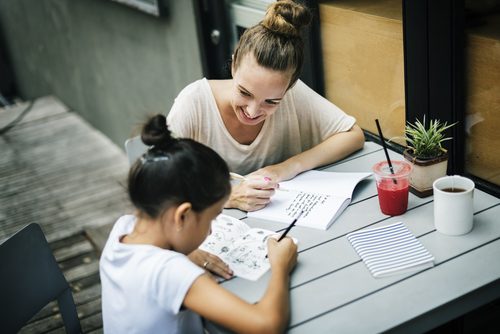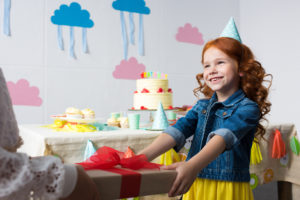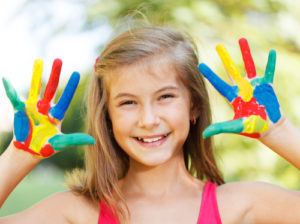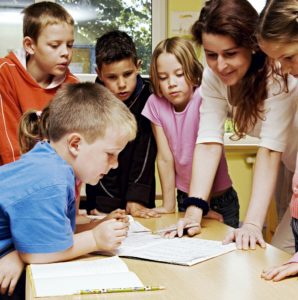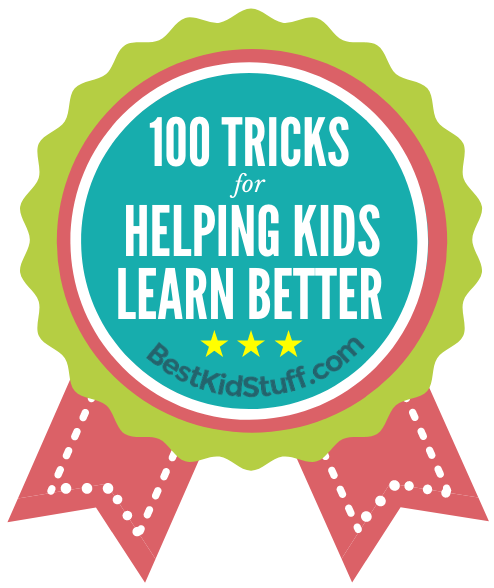
Students who excel in school aren’t always born fast learners! While a kid’s personality is crucial to his or her attitude toward learning and education, most children learn to do well in school.
With the basic aptitude and drive coupled with encouragement, a child will be on his or her way to becoming an excellent learner.
Perhaps one of the most common mistakes adults make concerning children’s academic learning is their imposition of limitations.
Many parents and teachers may believe that the classroom is the main source of academic growth, but the child’s home environment also impacts their ability or desire to learn!
As a parent, it pays to give your kids the encouragement, assistance, and any kind of help they need to succeed academically. It is the parent’s responsibility too–not only the teacher’s–to develop a child’s learning ability!
And when it comes to enabling and assisting kids to become academically successful, parents could use all the help! Here are 100 ways to help your kids learn better:
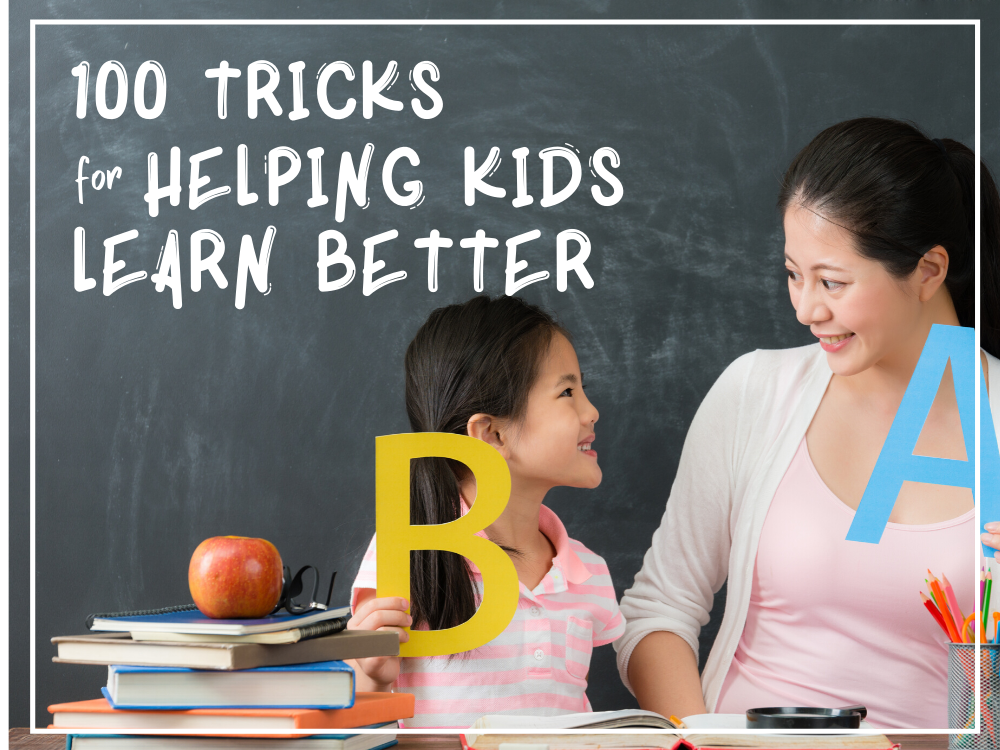
1. Start at the beginner’s level. Never take for granted that they know everything, so, identify proper learning techniques for them!
2. Before anything else, know your child’s learning style. Kids learn, concentrate, and perform excellently in different ways such as visual (prefer to see what they are learning), auditory (prefer to hear what they are learning), and kinesthetic (need to touch and experience to learn).
3. Guide your child how to listen – exactly. Developing listening skills, (and listening attentively,) improves language, communication, and comprehension, which are vital in learning, so show them how to be a good listener!
4. Work out some brain break ideas in between. Kids will find all information overload demanding in a short matter of time, so always ready sensory break ideas for them to get back on track!
5. Take them to field trips. Whether in a zoo, museum, or aquarium, there is nothing more educational than kids having an interactive learning experience firsthand!
6. Most importantly, library trips! A pile of books is a good source of knowledge and discovery for young and old alike!
7. Keep them focused on exciting activities. If you are dealing with kids, they have limited attention spans, so always plan stimulating, yet educational age-appropriate activities!
8. Encourage your kid to make friends at school. At this point in their developmental milestone, preschoolers with friends have another reason to keep attending daycare classes regularly and learning in general!
9. …or invite his/her friends over. Whether its an art playdate or educational board games, learning should never be a solitary event as they can express their feelings and exchange ideas with kids their age, and you can keep a closer look at them too!
10. Get those Flash Cards ready! This classic learning tool promotes active recall in reviewing their study materials from little kids and even adults!
11. Take them to shop with you. Because improving language skills involves real-life conversations, take them shopping where they can interact with the sales staff, ask for prices, pay the cashier, or describe each fruit and vegetable.
12. Dedicate a learning-conducive space at home for kids. Working in a quiet space, and avoiding areas with conversations and television reduces distraction for them!
13. Encourage them to participate in school activities. Aside from socializing, different school activities can boost their confidence and gives them a positive attitude in their ability!
14. Take advantage of front row seats in the class. Sitting in the front allows them to hear every word of the lecture!
15. As much as possible, be active in class discussions. Participating in front of a group talking about their ideas and voicing out questions gains them a deeper understanding of the content.
16. Get a pencil and draw pictures, diagrams, and figures. Like handwritten notes, creating their visuals will have their brains store these sets of drawings and retain them!
17. When following directions, give kids some visual cues. If dealing with more than one kid, introduce to them Line Up! so they stay in line based on numbers as this improves their sense of organization and discipline!
18. Get kids into Mind-mapping! Using visual pictures, color, symbols, and numbers, using a Mind Map organizes a great deal of daily information and retains them eventually!
19. Let them use Anchor Charts. These simple and colorful lessons will help kids learn basic concepts like letters, numbers, shapes, colors, and even basic rules!
20. Have them organize their handouts. It is unsettling for young visual learners to read and remember unorganized notes, so place them in a binder, rewrite or label them categorically!
21. Mix words and pictures. Whether in a flashcard or a whole paper, these work better than pictures alone as it makes them more memorable based on a cognitive psychology concept called Picture Superiority Effect.
22. Assign colors to familiar themes. Be it in their notes, handouts, or textbooks like associating a particular color for every part of speech in English lessons, always take note that the brain remembers colors very well!
23. Use music for everything. From calm and predictable music for concentration and fast, upbeat music to make them feel happy and active, different kinds of music appeal to different kinds of child learners!
24. Listen to familiar tunes. Incorporate their favorite songs when memorizing like remembering five words by singing them on the tune of “Happy Birthday!”
25. Repeat notes with eyes closed. This concentrates their mind on the facts alone via their auditory process, rather than any other distracting stimuli around them.
26. If they have an iPod, let them sleep on it. Upload learning materials and place them under their pillow at night, turning their gadgets into great educational tools!
27. Sing songs together. Finding recordings of song genres from nursery rhymes to pop, it can enhance their language skills by practicing all the memorized words, pronouncing them correctly and even the message/story behind the songs!
28. If possible, recorders can document lectures and reading materials. Ask their teacher if they have pre-recorded discussions or other audio educational references for kids to listen to at home!
29. Read notes out loud using weird voices. Make it enjoyable with goofy accents and hear themselves recall those pieces of information through the ears as opposed to the eyes.
30. Record kids reading key terms and definitions out loud. Aside from pointing out communication issues like diction and pronunciation, they can also listen to these recordings while they eat their cereals, walk to class, or before sleeping.
31. Invest in book stand or standing desk. For young kinesthetic learners, their body when standing up (instead of sitting down) is more engaged, have better comprehension, retention, and more connected to the learning process.
32. Turn ABC’s and 123’s into a sensory adventure! Make letters and numbers touchable by tracing them, and outlining them with textured materials (pieces of cotton, feathers, pebbles) gives them a feeling of how they are formed!
33. Buy them pens, pencils, and highlighters. From underlining important concepts and color-coding passages that link one another, excellent reading skills combined with hand movements are useful for tactile learners.
34. Organize an educational treasure hunt. Feeding your younger child’s hunger to explore, have him/her search items of a specific shape, color, or texture around the house or make a treasure map and have them connect the clues!
35. Utilize small movements. Kinesthetic study strategies such as twisting a rubber band on wrist or bouncing a ball against the floor catching it while answering a question can keep them engaged and focused!
36. Guide them to build or make models. Older kids love working with their hands, so think of engaging models like building a model demonstrating how trains turn corners or a skyscraper made of blocks!
37. Let kids explore their creativity. If they find a concept that is hard to learn, approach it from a different angle! You can manipulate materials such as dolls and miniature cars and turn them into pieces of a historical battle scene with the identity of essential figures at that time or building blocks to help them visualize math problems.
38. Work on whiteboards and chalkboards at home. Children doing physical work with math equations or writing sentences on the whiteboards than at a desk with pen and paper is more stimulating!
39. Get kids into regular exercise. There is no learning without concentration and better memory, so engaging in these physical activities is proven to boost children’s memory and mental sharpness!
40. Get them into Alphabet Yoga! Young schoolers will appreciate this fun physical activity as they create yoga poses modified by letters in the alphabet!
41. Let them learn to count with number rhymes. “This Old Man – He Played One” and “10 Little Monkeys Jumping on the Bed” are a fun way to learn numbers. You can both sing together in these number songs and rhymes.
42. In daily home tasks, always include numbers. Encourage your preschooler to use numbers in everyday household chores. Your kid can count lemons and berries, eat pizza in fractions, and count the toys when placing them back in the large storage box.
43. Grab Connect-the-Dots books. With dots needing to be sequentially connected to form a shape, young children can color the drawn shape after making it more fun!
44. Introduce numbers by counting the kid’s fingers and toes! Ask preschoolers to count their fingers on each hand or ask how many big toes or little fingers they have!
45. Let them play educational games with a group of kids. Aside from encouraging healthy competition, children learn better when they play together!
46. When going outside, point out numbers on Ad Boards and Vehicles. This will help them recognize numbers by sight and retain those images in writing numbers later on.
47. Buy them an Abacus. Designed to developing kids’ problem-solving skills, the Abacus is a manual calculating instrument that teaches kids early addition, subtraction, multiplication, and division.
48. Play Math Facts Bingo. Instead of calling numbers, state equations such as 6 x 8, and then they can locate the correct answer on their unique bingo cards!
49. Have fun with Hopscotch Math. Good for your grade-school kid and his/her friends, mix math with an outdoor physical activity as they solve simple addition and subtraction while playing!
50. Sit with them while they browse catalogs. Discussing and asking about different catalogs enhances kid’s math knowledge of money and percentages.
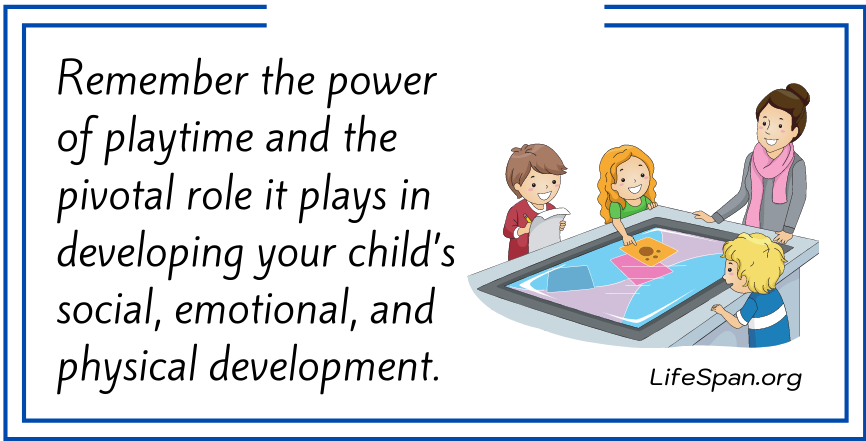
51. When traveling, ask them about timetables. For their knowledge of time and problem-solving skills, ask them things like the starting point of timetables; earliest and latest time travel, duration, or stops on the route.
52. Organize fancy dress competitions. Spark younger children’s interest in history by hosting a home or neighborhood “People From History” party.
53. Buy them kid maps and globes. Let young kids learn geography with some of these that they can color and has pop-up features!
54. Enroll your kids in science camps. Look for these in your area, as this provides an interactive and educational approach that makes science fun!
55. Invest in microscopes. Inexpensive pocket microscopes and magnifying glasses will do for these young kids to get outdoors and collect samples of plants and animals visually amazing them under these lenses!
56. Set a mini-laboratory in your kitchen. With a quick search for “kitchen science experiments” and materials mostly found at home, your cooking space is also a handy space for kids to stage simple yet interactive science experiments from the classic volcano out of vinegar and baking soda or extracting DNA from a fruit!
57. And buy them a science kit! They are relatively inexpensive with a complete set of materials for more involved experiments in every discipline – physics, chemistry, geology, astronomy, and even forensic science!
58. Build a small reading nook. Give these young minds a message that reading is fun and let them dig into this irresistible area filled with age-appropriate educational materials!
59. And fill them up with a variety of reading materials. Don’t stop with children’s books only and one genre but also consider graphic novels, biographies, and even cookbooks!
60. Find out what books keep them interested. Make sure that these are not beyond your kids’ reading abilities since their motivation will wane if the reading materials are hard to read.
61. Use “Space People” for writing beginners. When you want to get to the end of the word and start the next one, place the Astronaut Stick down to use as a space between those words.
62. Have them use a ruler or their finger to follow what they’re reading. Doing this trick makes kids focus on the content if they have trouble keeping their place while reading,
63. Encourage to read books out loud. If they are struggling with a particular word or part in the book, hearing their self aloud helps kids gain a better understanding of the idea.
64. And even their answers when studying also to say it out loud! Better to be done with a quiz and study buddy (or you), it’s a way for kids to be committed with their answers before checking it!
65. Try buddy reading. Also called paired or partner reading, take turns with your child reading by sentence, paragraph, or page to make your struggling reader comfortable.
66. Use “Word Families” when they are learning reading. Especially for kindergarten, learning Word Families are effective ways for children to improve their reading progress.
67. Work with Word Walls. Creating a wall like this for young kids to make as their visual reference during reading and writing, and also to add newly-discovered high-frequency words!
68. When reading a book, use skimming and scanning techniques. For older children, scanning requires one to have a look at the whole document quickly at least once, whereas skimming is achieved by reading that text only, which is considered to be relevant.
69. Don’t forget to structure your story-telling! Telling a story is good, but for them to retain information better and appreciate the content, use the four C’s: causality (the sequence of events), character, conflict, and complications.
70. Discuss with your children who have just read. After reading the book, explore your child ‘s learning and thoughts and might as well ask them some questions about the content/story!
71. Or make a Word-a-Pillar. Remember all the Sight Words by building a Word Caterpillar and learn from them as children will find this a fun alternative to a primary word wall!
72. Read a book to your kid regularly. One of the most beneficial learning experiences, the more they like the story, it enhances their concentration span and hangs onto every vocabulary in the book.
73. Most importantly, read yourself. For a child to get into reading, he/she should see that reading is part of a normal part of the day (from you, siblings, or grandparents) at home and for him/her to have a reading role model.
74. And before they sleep at night, read them a bedtime story! As children at age five can understand up to 24,000 words, these bedtime stories build their vocabulary; develops their creativity and imagination; learns rhyme and rhythm while listening, acquires knowledge through stories, and, exposes children to values and morals.
75. Play emotional charades. Hand out a few cards about a specific emotion (happy, sad, anger, bored, tired) and act them out as these can help children understand non-verbal cues (in facial expressions, body posture, and signals) when communicating.
76. Make sock puppets. Be imaginative with some colored socks with big eyes and create simple scenarios (such as a group of dinosaurs went grocery shopping) and make your kids act it out with all the voices done in proper English!
77. Use presentations and slide software. Let them create their presentations on a recent holiday trip or a personal interest and present it in front of your family to share their ideas and show their creativity!
78. Join them in Crossword puzzles and Scrabble! Hone their vocabulary skills with these fun word games and add some fun by making them construct a sentence out of those newly-found words!
79. Forget the computer; always use handwriting. Let kids practice their writing by hand while discussing future ideas.
80. Write letters to friends or distant family members! This has been a bit of a lost art but makes it all the more fun by writing letters and leaving them around the house to find, as this is a great ways to work on improving their writing skills!
81. Provide stationary and different colored papers. These materials will motivate your kid to write longer creative pieces than on boring plain white paper.
82. Make journaling a part of their routine. Have them write about their recent trip to the zoo and encourage them to make it a regular habit as it boosts their writing skills by expressing their thoughts!
83. Use photos to have them write stories. Take out one of their toys, set some story scenes, photograph them, and make them write a story that goes with the pictures after printing out the photos!
84. After that, turn it into a book with a cover. Make children feel like real authors by compiling it with a hardcover book made of construction paper to help them motivate them to do their best work always and keep writing!
85. Invent some “pretend-play” activities. Encourage your kids to write and enjoy writing by making them write a menu in a pretend restaurant or sign on poster boards for a lemonade stand.
86. In a single lesson, combine other objectives. Let them do the Number Punch that teaches them number sense and develops their motor skills at the same time!
87. Take notes! Older school-age kids can benefit a lot from this as it helps them recall information for future examinations.
88. Make use of acronyms and other mnemonic devices. As the order of colors of the visual spectrum ROY G. BIV as an example, mnemonic devices help build association by creating mental connections between two pieces of information for months or even years later.
89. Use technology to your advantage. With the right balance of parental control and time limits, find kid-friendly apps that are worth downloading!
90. Watch educational documentaries and videos. As long as it is a reliable source and set the parental control, it is a useful learning reference (both audio and visually) aside from plain textbooks!
91. And watch movies together. These kid-friendly films are good exposure for new vocabulary words and comprehension. Add some fun by adding a discussion element like asking about the character they like the best in the movie and why or the funniest or memorable moments.
92. Ask kids to teach what they learn. Do some role-playing using stuffed toys as students, and pretend your child is the teacher. One study suggests this as a practical approach!
93. Give them a challenge from time to time. Kids are often more intelligent than they realize, and giving them “do-able and appropriate” challenges can make them strive to learn for the better!
94. Loosen yourself (and your kids) with some sense of humor. Dealing with young children and helping them to learn better requires a significant amount of patience, so finding some humor may do the trick as it relaxes the body and makes them more receptive to new ideas!
95. Give them activities with a result. Unlike a drawing that kids can do later when they lose their concentration, a puzzle cannot be left unfinished!
96. Keep a “Sub Tub” if you’re away. When things get caught up at work, and you can’t help your kids after school, fill the Sub Tub with all the educational materials for them to learn!
97. Display your kid’s proof of hard work at home! Whether it is their first medal or a simple piece of art they made, it serves as a reminder and a source of motivation for your kid to perform well at all times.
98. …or simply praise their hard work! Showing a lot of interest in your child encourages them to do and learn better!
99. Remember the power of playtime and the pivotal role it plays in developing your child’s social, emotional, and physical development. And as they study hard and strive to learn, give them time to play—and lots of it!
10. Last, but certainly not the least, laugh with your kids! There is nothing more educational for kids than enjoying the learning process with you throughout its course!
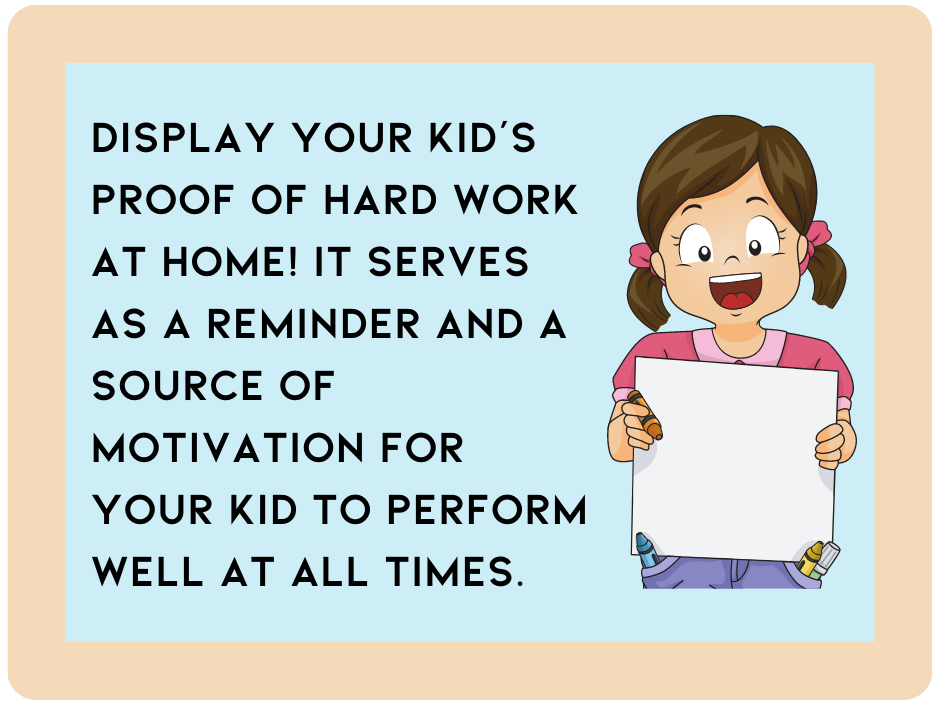
The Bottom Line
Helping kids learn is fun! Remember that when applying these hints and tips, you need to uncover the best tricks that work. The more approaches you try, the more likely it is for kids to enrich their faculty of learning! Get all the right educational materials you need, and be conscious about them being age-appropriate. With the right practices for helping them learn better, you can achieve educational enjoyment for your child!
